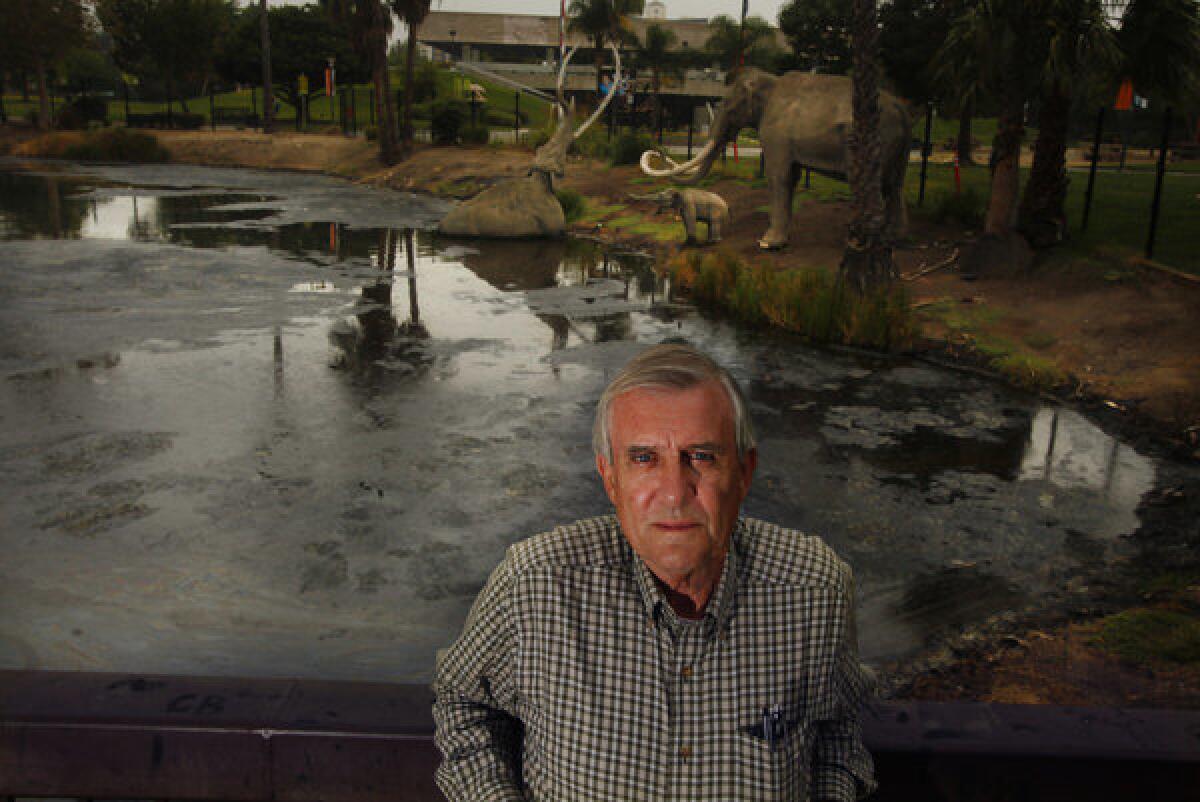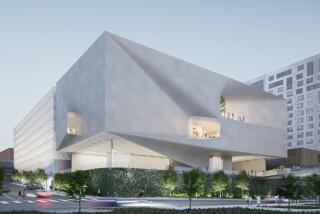Official says museum work could ‘severely impact’ La Brea Tar Pits

An official charged with protecting the La Brea Tar Pits said Tuesday that a proposal to overhaul the nearby Los Angeles County Museum of Art could “severely impact” the iconic landmark, but she was confident that the design could be adjusted to avoid harming the prehistoric preserve.
“We understand the plan is still very preliminary and fluid, and that if there is a negative impact on the tar pits, the design can and will be adjusted to protect them,” said Jane Pisano, director of the Natural History Museum, at Tuesday’s meeting of the county Board of Supervisors.
The current proposal would “severely impact” six of the nine tar pits in the park, and a proposed cantilever overhang would shadow the lake pit, she said.
“It’s early days. We know we have a lot of work to do,” Pisano said.
The public hearing about the proposal was requested by supervisors in August after the chief curator of the Page Museum, the county natural history museum at the La Brea Tar Pits, expressed concerns about the planned re-imagining of LACMA. A proposed design by Swiss architect Peter Zumthor would replace four of LACMA’s buildings with a central building designed to resemble, from above, a splatter of tar. Curator John Harris told The Times he was concerned that the construction would block off light and rain, affecting vegetation at the tar pits.
LACMA Director Michael Govan sought to assure supervisors that the proposal was preliminary and would be refined in coming years.
“We can guarantee there will not be a significant impact on the La Brea Tar Pits as we develop a plan,” he said, adding that the three museums would sign a memorandum of understanding about the matter in coming weeks. “The curving design was in fact intended to be flexible to avoid obstacles, including the tar pits.”
With a goal of building between 2017 and 2023, Govan said that in addition to improving visitors’ experience at LACMA, the overhaul will improve the entire area, with better sight lines and public access. “We will have something that exists nowhere else in the world,” he said.
Supervisor Zev Yaroslavksy, who represents the area and was initially not a fan of the architectural proposal, lauded the effort.
“The ambition you have is bold, ambitious and I have every confidence that it’s going to succeed,” he said. “This design has grown on me. I was not overly thrilled about it when I saw the original photographs and design. But when you saw the model, saw what this could mean for the museum itself and for the park, it’s really a stroke of genius.”
“Being able to do your project without doing any damage to the tar pits and the scientific research that continues to go on there is a no-brainer,” he continued. “There is room enough on that campus for both the tar pits and the museum, and that’s the way it’s going to have to be.”
ALSO:
Containment of Madre fire likely soon
Battle over Native American girl comes to end
Motorists must give bicyclists more room under new law
Twitter: @LATSeema
More to Read
Start your day right
Sign up for Essential California for news, features and recommendations from the L.A. Times and beyond in your inbox six days a week.
You may occasionally receive promotional content from the Los Angeles Times.







